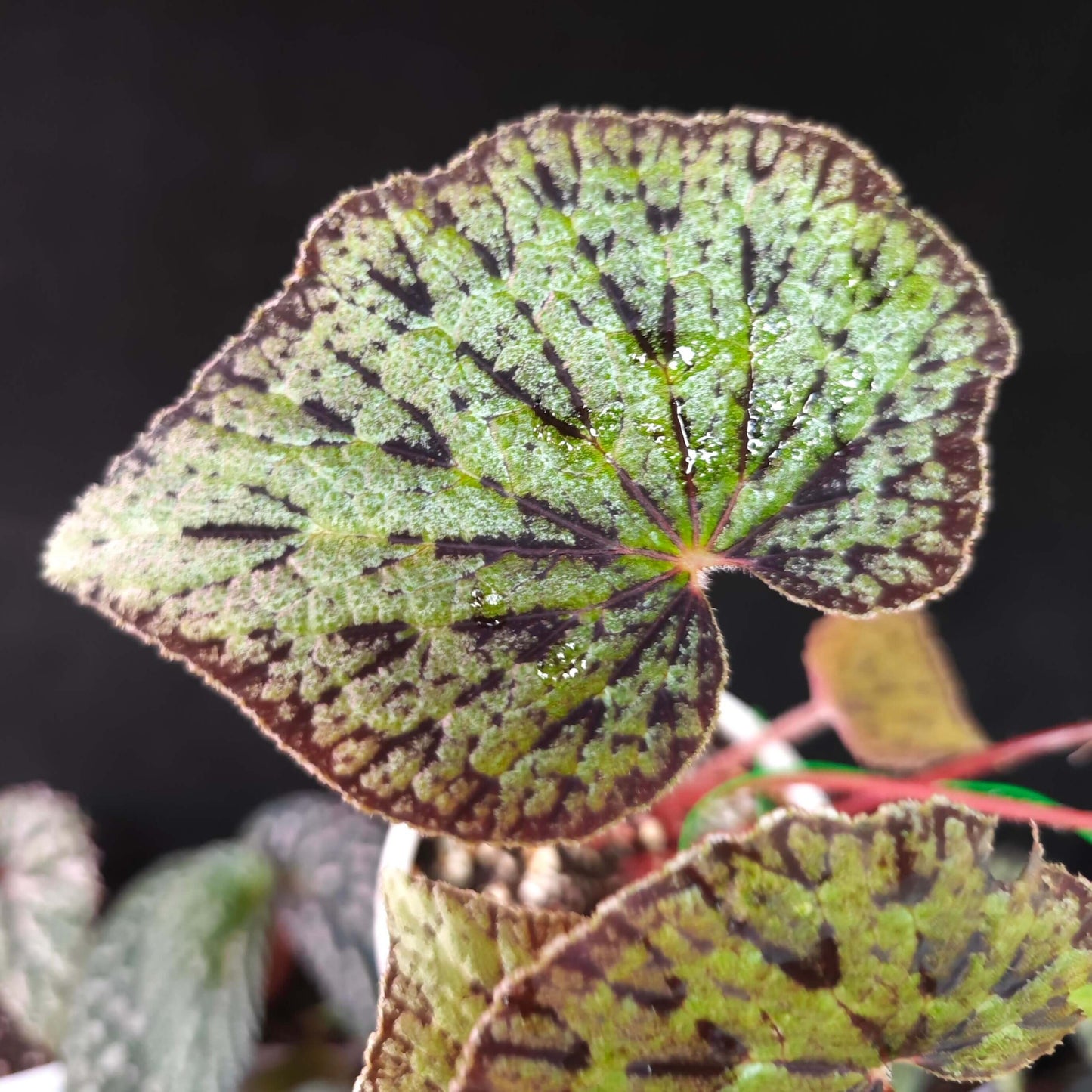Begonia austrovietnamica is endemic to southern Vietnam, specifically Bình Thuận Province, where it grows in wet tropical biomes. It is typically found on granite rock clefts within semi-deciduous forests, rooting in soil pockets, moss, or exposed roots, at elevations of about 300–500 meters.
Features:
-
A tuberous, acaulescent herb (no above-ground stem), with globose or nearly spherical tubers about 1 cm across.
-
Leaves are asymmetrical, broadly ovate; upper (adaxial) surface: metallic grayish-green with silvery patches, darker splash spots, and a dark band near the margin; underside (abaxial) reddish to magenta with matching patches and bands. Veins prominent; surfaces may have hairs (villous) on veins.
-
Inflorescences are axillary, branching panicles; staminate flowers have 4 tepals, pistillate flowers have 6 tepals. Ovary is 3-winged, narrowly trigonous-ellipsoid.
Care Tips:
-
Light: Bright, indirect light is best. Avoid direct sunlight which can scorch the leaves. A spot near an east- or north-facing window works well.
-
Watering: Keep soil evenly moist, but never waterlogged. Let the top layer of soil dry out slightly between waterings. Overwatering leads to root issues.
-
Humidity: High humidity helps. If indoors, use a humidifier or set the pot on a tray with pebbles and water to increase ambient moisture.
-
Soil / Substrate: Use a rich, well-draining mix with good organic content—peat, leaf mold, bark or coco coir plus perlite or similar for drainage.
-
Temperature: Warm tropical temperatures are ideal. Avoid cold drafts and ensure it doesn’t dip too low — try to keep temperature stable.
-
Fertilizer: Apply a balanced, diluted fertilizer during active growing season. Refresh soil or repot when needed to supply nutrients.

